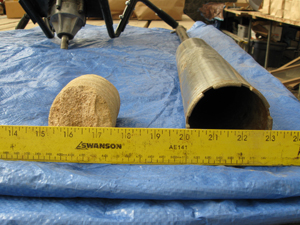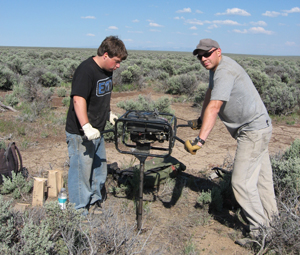Soils and Biogeochemistry
We expect that plants may respond differently to land management treatments due to soil differences at various research sites. We expect that treatments and changes in vegetation composition and abundance could also result in changes to soil properties, such as soil carbon storage, moisture availability, infiltration, etc. Past and future soil sampling will help explain these differences in treatment outcomes and long-term dynamics.
The data provided by these samples is used to:
• identify abiotic factors that influence vegetation distribution and site recovery following management treatments, including moisture retention and release;
• complete ecosystem carbon and nitrogen budgets for semi-arid systems and land management treatments;
• identify drivers of infiltration, runoff, and sedimentation processes.
Latest Resources on Soils
View article. Effective hydraulic conductivity (Ke) is an important parameter for the prediction of infiltration and runoff by the Rangeland Hydrology and Erosion Model (RHEM). Three sets of equations to predict Ke have previously been used in RHEM. These equations are mainly based on rainfall simulation data representing undisturbed sites and have not undergone comprehensive…
View article. Over the past century, pinyon and juniper trees have encroached into sagebrush steppe lands of the interior United States, and managers have for many years removed trees to stimulate the favored understory. While consistent understory response to tree removal in these semiarid lands suggests that trees outcompete other plants for water, no studies…
Watch video (12:49). Bruce Roundy gives background on his new paper in the SageSTEP special issue in Ecosphere: Long‐term effects of tree expansion and reduction on soil climate in a semiarid ecosystem


